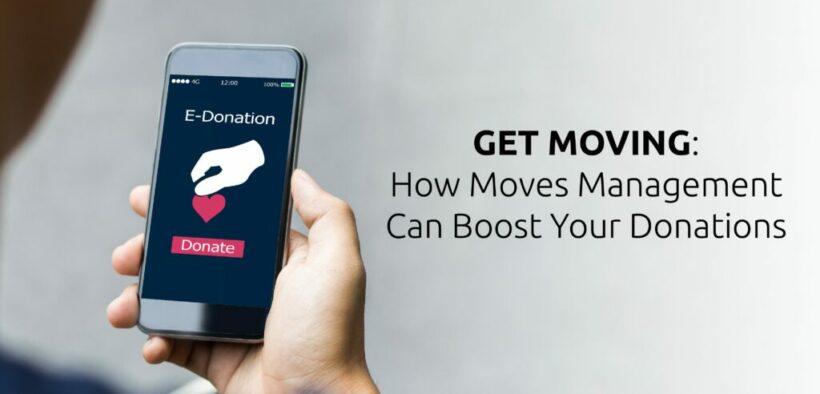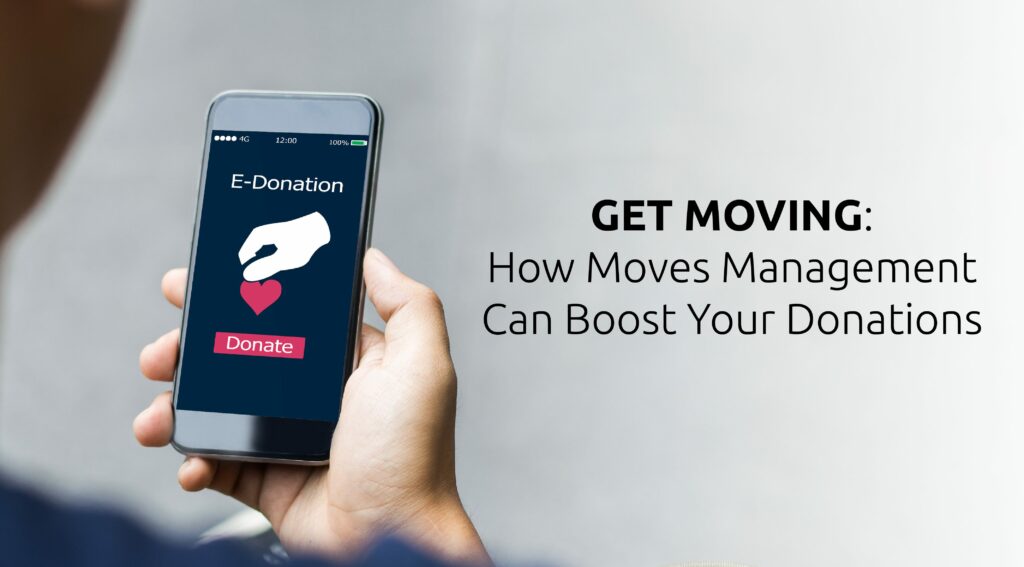Get Moving: How Moves Management Can Boost Your Donations
Share


Synopsis:
Your next big donor is hiding amongst your current lower-tier donors. In this article, we’ll explore the donor relations discipline known as “Moves Management.” First, you must have your donor database sorted into four giving levels. From there, you can begin to strategically move donors from one level to the next.
“Moves Management”
When considering lead and lag measures (see our previous article on donor relations), the discipline of “Moves Management” comes into play. Another lead measure you can easily track is the strategic movement of donors from the lower giving tiers to the upper levels. In the world of donor relations or advancement, the intentional cultivation of existing donors to become more generous is known as “Moves Management.” Let’s start by revisiting the necessity for sorting your donor base into four giving levels or tiers.
The top 15 percent of donors contribute 80 to 90 percent of money donated to your ministry. The global number across all nonprofits in the U.S., as published by Bloomerang, is that 12 percent of donors give 88 percent of your funding. In working with our Lutheran Church—Missouri Synod (LCMS) ministries, we’ve found that 15 percent of donors giving 80 to 90 percent of your funding is generally true. So, knowing how much your donors give and who lands in the top 15 percent are good places to start.
However, that’s only the start. Because what is also true, based on the Bloomerang research, is that your future major donors are already giving to the ministry. They’re just not giving at the level of which they’re capable…yet. It’s your job, as the one responsible for donor relations, to find them and help them move from where they are to where they could be. Before we get to best practices in “Moves Management,” let’s consider two types of gifts from potential large gift donors: “leave me alone” gifts and “come find me” gifts.
Some wealthy donors have determined your ministry wouldn’t know how to deal with a large gift and that they don’t want to be bothered. These donors will consistently make a gift just big enough to keep you happy and to keep them from having to deal with you. I call these the “leave me alone” gifts. On the other hand, there are wealthy donors who are intrigued by your ministry, would like to know more, and would be much more generous if you sought them out. I call these “come find me” gifts. Part of “Moves Management” is determining which gifts are “leave me alone” and which are “come find me.”
There are three steps to take before you can put a truly strategic “Moves Management” plan together.
- Sort your donor base into four tiers (this is referenced in our “Start at the Top” article).
- Top 5%
- Next 10%
- Lower 35%
- Bottom 50%
- Using “Donor Mining” techniques, discover who the potential large donors are in the bottom two tiers.
- Review the giving history of potential large donors and begin to discern which, if any, are making “leave me alone” gifts and which are making “come find me” gifts.
Now, simply review all donors, including potential large-gift donors to see where they are in their current tier of giving, and make a plan to move them up. I say simply, but it does take some thought and discernment. For example, let’s say your giving levels are: Tier 4 – $0 to $250; Tier 3 – $251 to $750; Tier 2 – $751 to $1,500 and Tier 1 – $1,500 and up. Look for those in tiers three and four who are regularly near the top each year. Someone giving $225 every year could simply be solicited to give an additional $50 at year-end or with another appeal to move them up to tier three. There will always be a few donors hovering near the top of a tier who can be strategically moved up.
Next, look for those who could make a major move but don’t try to move them all at once. To find these, you’ll need to do some “donor mining.” There are effective tools to discover the wealth and potential generosity of your donors. Those of you who already use Raiser’s Edge from Blackbaud, most likely have access to Wealth Engine. This allows you to run a profile on your donors to see what their potential giving capacity might be. Another resource is DonorSearch. However, our experience is that DonorSearch doesn’t adequately capture giving data on those who only or primarily give to ministries. A great resource we often recommend is the Assay program from the Geis Group based out of Lincoln, Neb. They charge a fee to provide a comprehensive analysis of all your donors. Ministries we work with have found this analysis to be very helpful.
“Moves Management” for a potential large gift donor might require a multi-year approach as you build their confidence in your ministry, strengthen the relationship and challenge them to increase giving incrementally year after year.
Whether you’re moving mid-level donors up a bit at a time or strategically moving major donors from small gifts to their ultimate potential, “Moves Management” is a strategic approach to helping your donors be as generous as they can possibly be. Part of the Lutheran Church Extension Fund (LCEF) Mission Advancement Partnership (MAP) coaching includes helping you create your “Moves Management” strategy. Email Tim.Kurth@lcef.org or call 314-885-6623 and learn how MAP can turbocharge your donor development.

